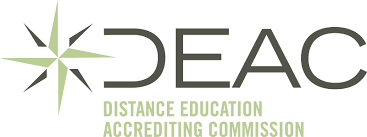5 Ways To Keep Your Classroom Interesting And Engaging
Join a global community of over 200,000 TEFL teachers working throughout the world! Enrol me!
1. Allow options and keep it interactive
Providing options to learn is an effective teaching technique because it allows students to feel as if they are active participants in their learning experience. This is a great motivator to get students to remain interested and gain a sense of independence in the classroom. While the teaching style of lecturing in front of the classroom while students take notes is traditional, it often is not the most effective way for students to learn.
Creating lessons that involve hands-on activities keep students engaged and makes the lessons more interactive. Allowing the student to guide instructions- whether that be by asking them to record themselves explaining and teaching a vocabulary word or topic- creates feelings of connection to class and their fellow students.

2. Be culturally responsive and create trusting relationships
Although this should seem obvious, studies have shown that a successful learning environment is one where students feel their voices are heard, respected, and they are comfortable taking intellectual risks. Strong student-teacher relationships create higher student academic engagement, grades, attendance, lower dropout rates, and fewer disruptive behaviours. It is important for students to understand that they are encouraged to embrace their culture and language as a crucial part of their being and that learning a new language is adding to what makes them unique.
Creating a teaching environment where students see their educators incorporating aspects of their culture allows them to feel more comfortable and connected to the lesson. For example, educators can keep culturally appropriate books in their classroom library, or incorporate home visits to get to know student’s family lives and include them in lessons.

3. Make it visual and incorporate more group work
English language learners have a tougher time processing spoken language, which is why it is important for teachers to write down basic things- such as classroom etiquette- on the board whenever possible. Concepts that are harder to understand can be clearly explained through visuals of the step-by-step process or including what the finished product should look like. Showing students how to physically do something helps retain comprehension and grasps concepts better.
Additionally, smaller group-work lessons allow students to learn with their peers in a more personal and low-risk environment, as they often feel more comfortable sharing their ideas in a small group environment. Students can work together to help their peers answer language-specific questions or clarify confusing/tricky English words, encouraging each other to succeed.

4. Maximize student time outside the classroom
Like many tasks, students learn best by doing. Since they will probably not practise the language at home, make sure your lesson plans involve maximizing student talking time during class. Don’t fill up class time with tasks that students can easily do by themselves- make the most out of each lesson explaining difficult concepts, speaking, and group work. Save the individual work outside the classroom so that students can apply what they learned earlier in class, helping to fully comprehend the information.

5. Use positive reinforcement and keep it simple
Students are already hesitant and unsure of themselves in a learning environment, but one rule to help calm those nerves is to avoid embarrassing a student in front of the class, especially when they give a wrong answer. You run the risk of scarring that student and it will make them terrified to participate again. Creating a positive attitude in the classroom by praising students often, even if they make slight mistakes, is a great way to ensure they feel comfortable and safe.
Many newly certified teachers make the mistake of using too much English when instructing, praising, or giving feedback to students, often using over-complicated and redundant language. For example, an instruction such as “Now class, please pay attention and go into your desks to grab your workbooks for today’s lesson,” a shorter phrase like “please take out your workbooks. Okay?” helps beginner students understand the classroom instructions. Along with simple language, appropriate gestures like the OK sign or thumbs up are also great ways to help beginners follow directions.

Accreditation & Quality Assurance
The TEFL Academy was the world’s first TEFL course provider to receive official recognition from government regulated awarding bodies in both the USA and UK. This means when you graduate you’ll hold a globally recognised Level 3 (120hr) Certificate or Level 5 (168hr) Diploma, meaning you can find work anywhere and apply for jobs immediately.
 United Kingdom
UK
United Kingdom
UK












